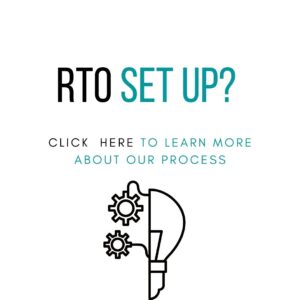When speaking to potential clients who are considering setting up an RTO our conversation revolves around these typical queries:
🌟 “How long will it take?”
🌟 “What do I need to do?”
🌟 “What qualifications are required for me, or my trainers and assessors?”
These questions are common amongst many RTO’s, and whilst I answer for ASQA, I also know that the process is the same for TAC in WA. So read this as whichever regulator you will be registering under.
Addressing the first query, “How long will it take?” ASQA (Australian Skills Quality Authority) recently clarified that application processing times are expedited when the RTO is compliant and all procedures are executed correctly. Having someone to guide and support you makes a significant difference.
When initiating an application, considering the financial risk is crucial. The financial risk indicators evaluate the business’s financial viability and potential impacts on students and the business, ensuring the delivery of quality training and assessment services.
The regulators provide a financial risk tool which enables you to demonstrate the resources supporting your business. ASQA emphasises the importance of a sustainable business, a sentiment I echo. Similar to any business setup, it’s wise to ensure there are sufficient funds to sustain the business for at least six months. ASQA is more concerned with accurate figures than a specified minimum value of total assets.
Though ASQA doesn’t mandate a specific amount in the bank, I recommend showcasing at least six months’ worth of funds to cover ongoing costs, promoting peace of mind for yourself and your family.
Moving on to “What do I need to do?” — essentially, you need to prepare your business for operation. I recommend reviewing the User Guide for the RTO Standards, which contains inspiring case studies. Implement actions, prepare documents, people, and everything necessary to demonstrate your ability to run a successful RTO.
When evaluating the quality of business planning, ASQA considers:
💡 Evidence of market research through consultation
💡 Financial budget projections and underlying assumptions
💡 Strategies for training and assessing students
💡 Demonstrated understanding of the VET Quality Framework
💡 Resources, staffing, equipment, and assets required for the plan
💡 A risk plan with appropriate mitigation strategies
Addressing “What qualifications do I need (or my trainers and assessors need)?” It’s about showcasing recent vocational competency for each unit they will deliver and assess. This is demonstrated through recent industry experience and a detailed matrix against the units.
Identifying industry experts currently active in their field and undertaking training is a very effective model. As an RTO, ensure they hold the necessary training and assessment qualifications. Maintaining currency in training, assessing, and industry competency is essential through continuous professional development.
It may appear to be easy, yet the RTO Standards are complex, and getting support and a mentor who can guide, and read what has been prepared is an important part of the journey. I highly recommend you factor this into your set up costs.
Having a knowledgeable mentor can significantly streamline the process, providing insights and ensuring that your documentation aligns with the standards. This proactive approach not only enhances the efficiency of your application but also contributes to the overall success of your RTO. Consider it an investment in the foundation of your venture, ensuring a smoother path towards accreditation and operational excellence.
Connect with a FREE 30 minute consultation to find out how we can support you.

